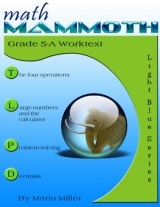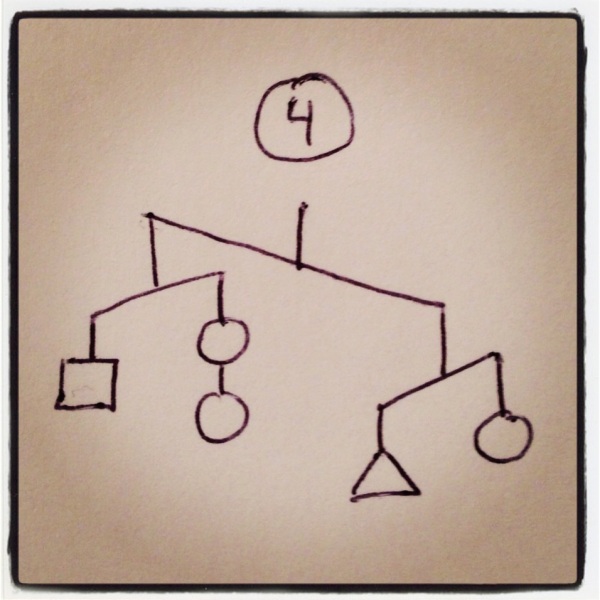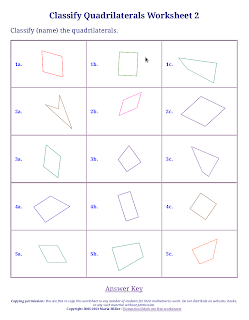
Maria's Math News, Vol. 71, April 2013
I love teaching, and I love math. This newsletter is my way of reaching out and helping you to teach it, too.
Welcome to April! This time, I have some Math Mammoth news... but also plenty of other stuff! Quadrilaterals, triangles, simplifying fractions before multiplying... and how to tell if your math curriculum is working.
~Maria
1. Math Mammoth news
2. Simplify before you multiply!
3. Free worksheets for classifying triangles and quadrilaterals
4. How to tell your homeschool math program is working
5. Tidbits

1. Math Mammoth news
Math Mammoth Grade 5 has been updated & revised! You can get all the details about the changes here.If you are an old customer and would like the updated files, please use the contact form and include your purchase information (email/name used, if at Kagi or Co-op). Currclick customers can log in to their account at Currclick and download it from there.
Questions about the Common Core Standards and Math Mammoth?
I created a long FAQ with lots of details that hopefully will answer everyone's questions!
Math Mammoth South African version is now available for grades 1-3! You can also purchase all three grades as a discounted bundle.
See information and samples:
Grade 1 (South African version)
Grade 2 (South African version)
Grade 3 (South African version)
2. Simplify before you multiply!
I'm having difficulty in solving this question which involves calculating fractions- this question relates to finding an arc length.
140 divided by 360, multiplied by 2, multiplied by 22 divided by 7, multiplied by 12:
140
360× 2 × 22
7× 12
You can either put everything in the calculator, multiplying the top numbers, then dividing by 360 and 7.
Or, you can simplify before you multiply.
How? Read more here.
3. Free worksheets for classifying triangles and quadrilaterals
I've completed making two new worksheet generators for HomeschoolMath.net:Classify triangles - make worksheets for classifying triangles by their sides, angles, or both.
Classify quadrilaterals - make worksheets for classifying (recognizing, idenfitying, naming) quadrilaterals. There are seven special types of quadrilaterals: square, rectangle, rhombus, parallelogram, trapezoid, kite, scalene, and these worksheets ask students to name the quadrilaterals among these seven types.
Use the links above to set your options (image size, number of problems, etc.)
They look sort of like this:
I had fun making the scripts, though also some challenges. But overall I enjoy such work - programming is similar to problem solving in math.
In this case the problems often were math, such as how to make a script that gives me a kite or a scalene quadrilateraly with varying dimensions. I was using php GD library to first create a bunch of images, and then made the worksheet script that simply chooses randomly among the pre-made images.
Enjoy!
4. How to tell your homeschool math program is working
Denise has posted an article How to Recognize a Successful Homeschool Math Program on her blog. I enjoyed that a lot and recommend you read it too, no matter what math curriculum you are using!She summarizes it this way:
If you are wondering how well your homeschool math program is working, pay attention to your children. Do they understand that common sense applies to math? Can they give logical reasons for their answers? Even when they get confused, do they know that math is nothing to fear?
If so, then be assured: your children are already miles ahead of most of their peers. Their foundations are solid, and the details will eventually fall into place as you continue to play with mathematical ideas together.
She also notes her 'yardstick' for measuring math anxiety: if your child does not fear word problems, he/she is not suffering from math anxiety.

There was a time when my second daughter actually relished word problems and thought they were the BEST part of her math work (it was about 2nd- 3rd grade). Now she said she still enjoys them, but likes mental math problems best (she just started 5th).
When it comes to mental math, I sometimes give myself a little challenge (such as when making an answer key to my books): can I do this problem mentally instead of a calculator? It's not anything I fear - it's enjoyable in a sense.
I feel this is similar to when people do crossword puzzles, solve Sudoku, or even play Freecell: you actually enjoy the mental challenge, right? The same can happen with mental math, or with math in general:- it doesn't have to be something fearful, disgusting, or repulsive -- far from that! : )
5. Tidbits
 "Imbalance" logic puzzles
"Imbalance" logic puzzles
Here's something for all of us puzzle lovers: logic imbalance problems invented by Paul Salomon. You need to order the shapes by their 'weight'.
They are simple, yet captivating. Paul also recommends you start making your own imbalance puzzles, as a more 'puzzling' exercise.
-
Ten activities for boosting your pre-school aged child's math skills
Simple tips from patterns and shapes to analyzing data and number games.
- Why m for slope
Ever wondered why they use m for slope in y = mx + b? The answer... well, seems to be unknown.
- Algebra: the Supplement
Actually, a free algebra curriculum of sorts by Dan Meyer, divided into weeks, with LOTS of material for you to use. Download keynotes, handouts, powerpoint and PDF files.
Feel free to forward this issue to a friend/colleague! Subscribe here.
Till next time,
Maria Miller

